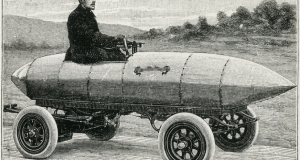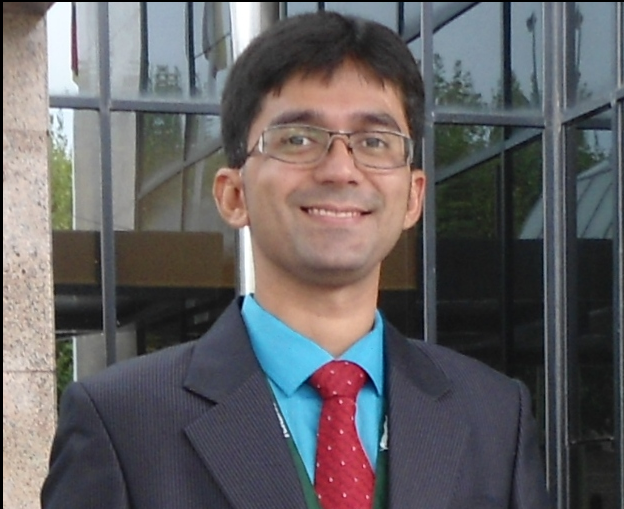AUTHOR: Martina Orefice
On my flight back to Belgium…if FIAT had not quit the etn-DEMETER project just before it started, I would have been returning from my home country, Italy. But I am undoubtedly much happier to have been sent to Aalborg, Denmark, for our 6th network wide event. Denmark means for me sustainability. I still remember like yesterday my emotion 4 years ago in front of an authentic copy of “Our Common Future” at the Dansk Arkitektur Centre (DAC); Aalborg was famous to me for having been the host of the first European conference on sustainable cities.
Figure 1. The authentic copy of the “Our Common Future” report at the DAC
I was looking forward to experiencing traces of that conference and the city did not disappoint: the urban spaces are really livable and green. However, that was not all. The best surprise arrived the last day of the meeting, when we went to visit the Grundfos company in Bjerringbro. Grundfos was born in 1945 as a family company and it is nowadays the world leader in centrifugal pumps to lift water up. What is the connection between electrical vehicles and centrifugal pumps? Both of them use rare-earths permanent magnets (RE-PMs), or at least the pumps of Grundfos do contain RE-PMs. 6 out of the 16 million of yearly sold pumps use RE-PMs and especially NdFeB polymer bonded ones. The company pays a lot of attention to sustainability. Their environmental agenda is based on 2 of the 17 Sustainable Development Goals (SDGs) of the United Nations: goal 6 “Clean water and sanitation” and goal 13 “Climate Action”.
Figure 2. Sustainable development goals on which the environmental programme of Grundfos is focused
(source: https://www.un.org/sustainabledevelopment/development-agenda/)
At the moment, 10% of the global electrical energy consumption is consumed by pumps but if all pumps were globally replaced by modern high-efficiency ones, like those produced by Grundfos, this consumption would be reduced to half. It might be hard to believe that the engineers at Grundfos have been able to reduce, in the perspective of the SDGs 6 and 13, the energy consumption of a pump to 13% of the energy consumed by an equivalent pump of about 20 years ago. Such an amazing result is only motivating the company to do even better and to embrace a new challenge: circular economy. That is why, I have a comment here: <<Why do you not include in your agenda also goal 12 “Responsible production and consumption”?>>. A continuous action to implement the circular economy is to actually “think in a circular way”, to define a business model suitable with the new philosophy of the company. Circular economy, in fact, does not mean only recycling and Grundfos defined 3 ways to proceed: reusing, remanufacturing and recycling. Technical, political, and legal feasibility studies are necessary before putting the remanufactured/recycled pumps back on the market. In this way, corporate social responsibility also plays an important role in the policy of the company. It is clear that Grundfos really care about the perception of their customers regarding the remanufactured/recycled pumps. The main recycling objective is geared toward the RE-PMs and that is not only for an environmental reason, but also for the long term goal to ensure a profitable business with raw materials at a very volatile price. However, this is not easy especially when the amount of valuable metals represents about the 1 wt.% of the pump. You’ll find that the Grundfos stock includes also other pumps which contain more rare-earths but the sustainability team believes that if it is possible to recycle the pumps with the poorest rare-earths content, then it will be possible also to recycle the others. At the moment, everything is at a study stage and the magnets are actually sent to an external partner for recycling. However, once again, the biggest challenge to overcome is collecting the pumps at their end of life: of 16 million of yearly sold pumps only about 6000 come back! So if you are reading this blog and have an old Grundfos pump, don’t wait to send it back to them! After, the old pump is back to the production plant, another difficulty is dismantling the apparatus and recovering the magnets out… can Grundfos give up in front of this challenge? Not at all! But they have asked for some help: they directly involved their coworkers, because no one knows the product better than those who directly work with it. Here, another important social aspect of the Grundfos sustainability policy comes as well. The team which is studying the dismantling and recycling of the pumps are disabled workers, who will be otherwise very likely excluded from the job market. Peter, the responsible of the sustainability team, told us that they were overwhelmed by the enthusiasm of the new coworkers. What I appreciated is that these guys continuously change their task: I noticed, in the few minutes that we were there, that one woman was doing 2 to 3 different things. This is, in my opinion, very remarkable because they do not perceive their job just like a mechanical action but like a challenge where they can make a difference. Other things which also caught my attention during the visit at the production site were all the small, apparently irrelevant, details that actually make your working environment more pleasant. For example: metal skylight, motivational billboards about recycling, efficient division of compartments… and last but not least, –again relevant for the social aspect of sustainable development– Grundfos also has an higher learning center, the Poul Due Jensen Academy. It is an education space, which also includes a dormitory in Bjerringbro, for high-level education of the employees of Grundfos, because “to see a change tomorrow, we have to train the people today”.
Figure 3. etn-DEMETER researchers and supervisors at the Grundfos production and recycling site
A special thanks to professor Peter Rasmussen for organizing the visit and to Henrik, Peter and Flemming from Grundfos for welcoming us and revealing how a pump manufacturing company can make the world a more sustainable place!
Martina

 European Training Network for the Design and Recycling of Rare-Earth Permanent Magnet Motors and Generators in Hybrid and Full Electric Vehicles (DEMETER)
European Training Network for the Design and Recycling of Rare-Earth Permanent Magnet Motors and Generators in Hybrid and Full Electric Vehicles (DEMETER)






